The most beautiful season for traveling is back. Would you like to undertake a marvelous tour? Are you looking for any advice about enchanting destinations where to go in spring in Italy? Spending it in our country is perhaps one of the sweetest gifts one can give oneself. The climate, while still mild, is at its best, and the landscapes light up with wonderful colors.
If you are wondering where to go in spring in Italy in 2025, you are spoilt for choice. From cities of art that smile again in the warm sunshine to landscapes of sea, lakes and hills, Italy offers plenty of travel ideas with attractive destinations that blossom in the spring season.

Where to go in Spring in Italy: explore the most fascinating destinations
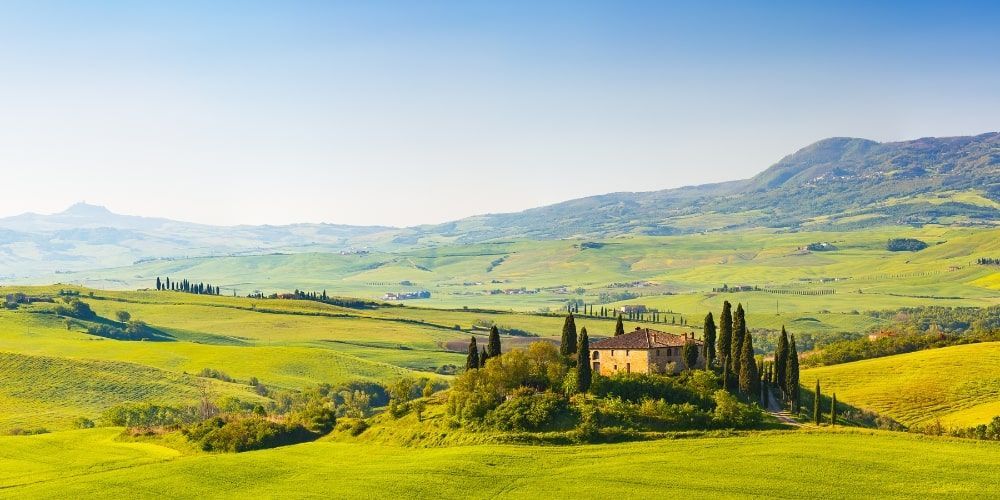
Spring in Italy is wonderful from North to South. Blossoms and trees are colored with new light, city squares come back to life and the sun reappears to make the landscapes shine. In short, for many, this is the best time of year to travel and enjoy the sights and locations without the hustle and bustle of summer or the cold temperatures of winter.
If you've decided to treat yourself to a spring escape to Italy, you'll need to do a little planning and we're here to help. We have selected 20 destinations and travel ideas for you to enjoy spring in Italy at its best, from North to South. Discover them with us.
20. The Champorcher Valley, the beauty of the Aosta Valley
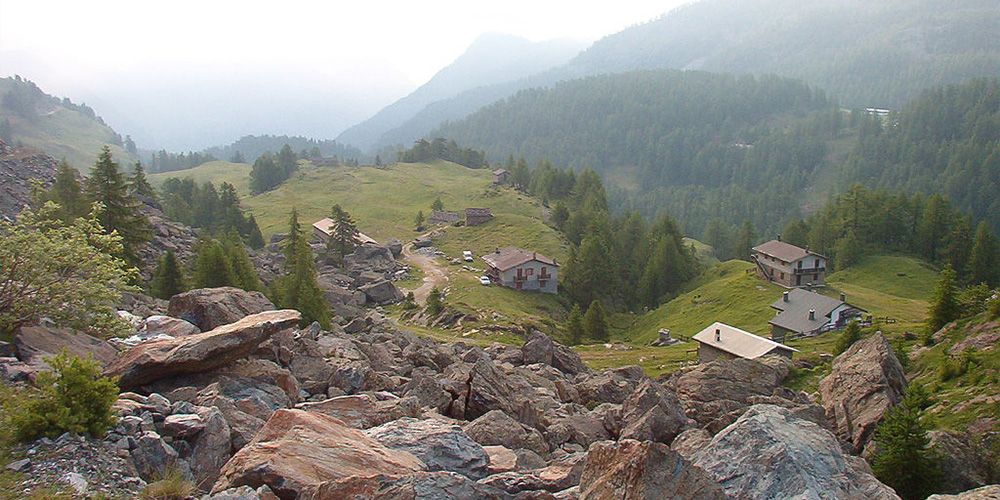
The Champorcher Valley is an Alpine valley located in the autonomous region of Valle d'Aosta, Italy. Known for its unspoiled nature and beautiful mountain landscape, the Champorcher Valley is an ideal destination for nature lovers and hikers. The valley lies right at the foot of the Gran Paradiso and offers numerous opportunities for mountain hiking, trekking, climbing and winter activities such as downhill and cross-country skiing.
The valley is also a place of great natural interest, with numerous trails leading to the discovery of breathtaking landscapes and rare and protected animal species, such as the chamois, ibex and golden eagle. In every season, the natural beauty of the valley makes it an unmissable destination for those who wish to spend time in contact with nature and enjoy the beauty of the Alpine landscape of the Aosta Valley.
19. Tour in the Langhe: spring in Piedmont, among hills, wine and hazelnuts
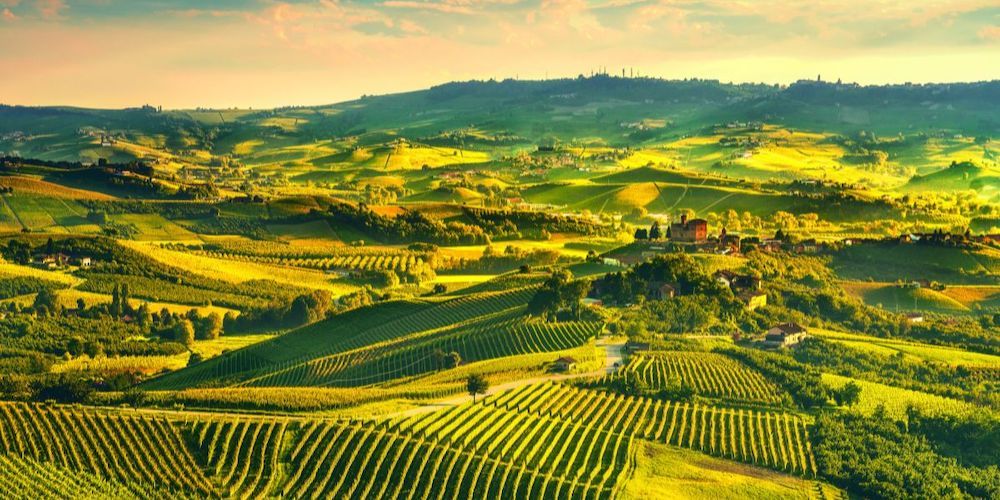
With the sun reflecting off the endless hills and the scent of nature blooming once again, the Langhe is the ideal destination for a spring trip. The pearl of Piedmont, home of wine, truffles and hazelnuts, offers a variety of gastronomic wonders, and more, to discover and experience.
Alba is the capital of the Langhe and in 2017 was recognized by UNESCO as "Creative City for Gastronomy". The hills of this vast territory are dotted with numerous villages rich in history and cultural interest. Barbaresco, Barolo, La Morra, Neive, are all ancient medieval towns whose narrow streets are waiting to be explored in long and relaxing walks.
The ideal way to wander among the harmonious hills of the area, in springtime, is surely by bike, in order to fully enjoy the boundless landscapes between one village and another.
And after a long bike ride, what better way to relax than with a glass of the famous wines of the area? The excellent Barbaresco, Barbera, Barolo, Dolcetto, Furmentin, Nebbiolo and Pelaverga (DOC and DOCG wines) are exported all over the world, but the best place to taste them is in the many wine cellars of the area. And finally, don't miss the chance to taste the hazelnut cake, a specialty of the village of Cortemilia, which highlights the flavor of this renowned local product.
18. Bay of Silence in Sestri Levante: spring in Italy in the wonderful Liguria
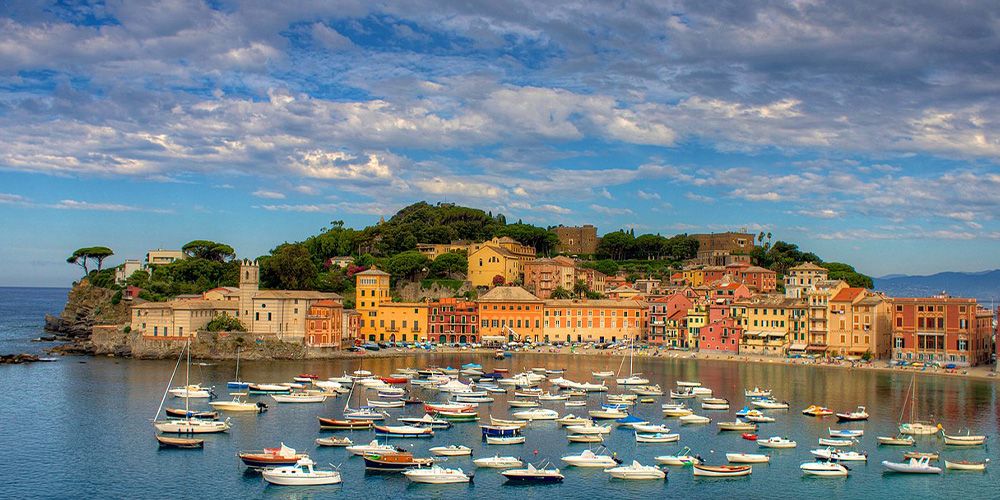
Sestri Levante is a small coastal town located in the Liguria region in north-western Italy. Located between Genoa and La Spezia, Sestri Levante is famous for its sandy beaches and the beauty of its historic centre. The town is strategically located with a spectacular view of the Ligurian Sea and surrounded by lush green hills. The historical centre of Sestri Levante is characterized by narrow alleys, colorful houses and old Genoese-style buildings.
Among the main local attractions are the Baia del Silenzio (litt. Bay of Silence), a beautiful beach named after its quiet and peaceful environment, and the Baia delle Favole (litt. Bay of fables), so called because of its legendary beauty and enchanted setting. Sestri Levante is an ideal destination for those seeking a relaxing holiday by the sea combined with the discovery of one of the most beautiful and authentic towns in Liguria. In spring you can also enjoy the not too high temperature and the sea breeze.
17. The beauty of Lake Como, pearl of Lombardy
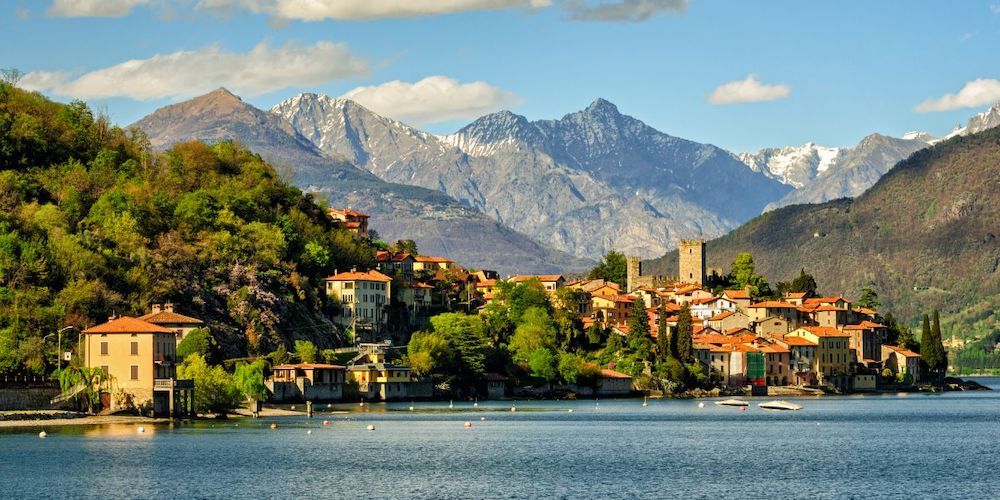
Located in the heart of Lombardy, Lake Como is one of the most enchanting destinations in Northern Italy. Surrounded by mountains and featuring its distinctive inverted Y shape, it's the third-largest lake in Italy, offering breathtaking landscapes that attract travelers from all over the world.
Easily accessible from Milan, one of its main attractions is the village of Bellagio, known as the "Pearl of the Lake", with its elegant gardens and charming cobblestone streets.
Equally captivating are Varenna and Menaggio, picturesque towns that seem straight out of a postcard. Time moves slower here, with scenic lakeside walks, visits to historic villas such as the splendid Villa Carlotta and Villa del Balbianello, and stunning views of the crystal-clear waters and surrounding mountains.
Lake Como is also ideal for outdoor enthusiasts: sailing, kayaking, hiking, and cycling thrive in this magnificent setting. For those seeking relaxation, nothing beats a peaceful cruise, admiring the refined architecture of the many villas that dot the shores.
Visit Bellagio and Lake Como with a boat cruise from Milan16. Val di Non in Trentino Alto Adige
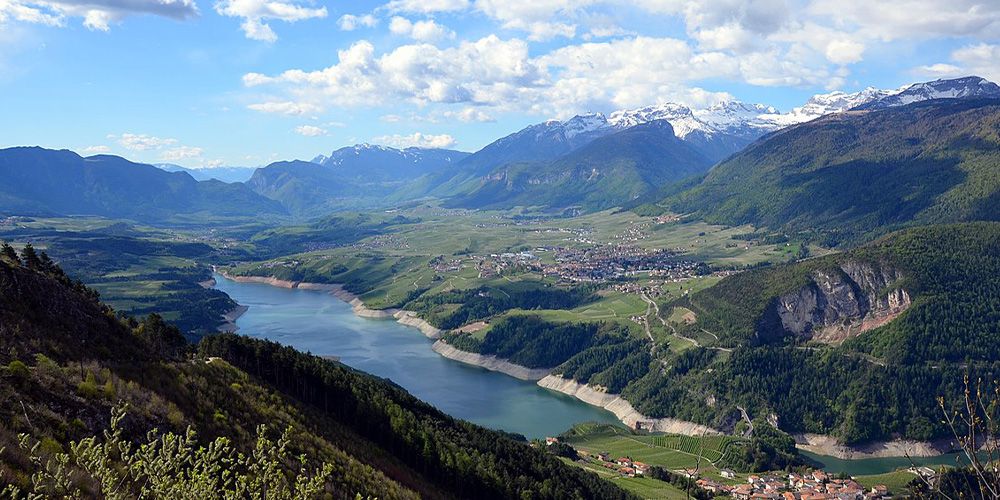
Val di Non is a valley located in the province of Trento. It is known for its natural beauty, with the mountains of the Dolomites rising imposingly on its sides. The valley is crossed by the river Noce and the area is characterized by numerous apple orchards, vineyards and coniferous forests. This valley is also famous for apple production, with numerous companies growing this fruit and processing it into juice, cider and other typical products.
Other attractions in the area include medieval castles, such as Thun Castle and San Michele Castle, which offer panoramic views of the valley. Val di Non is also an excellent starting point for mountain hikes and outdoor activities, such as rafting and paragliding. Visiting it in spring is something wonderful.
15. The village of Venzone: spring in Friuli Venezia Giulia
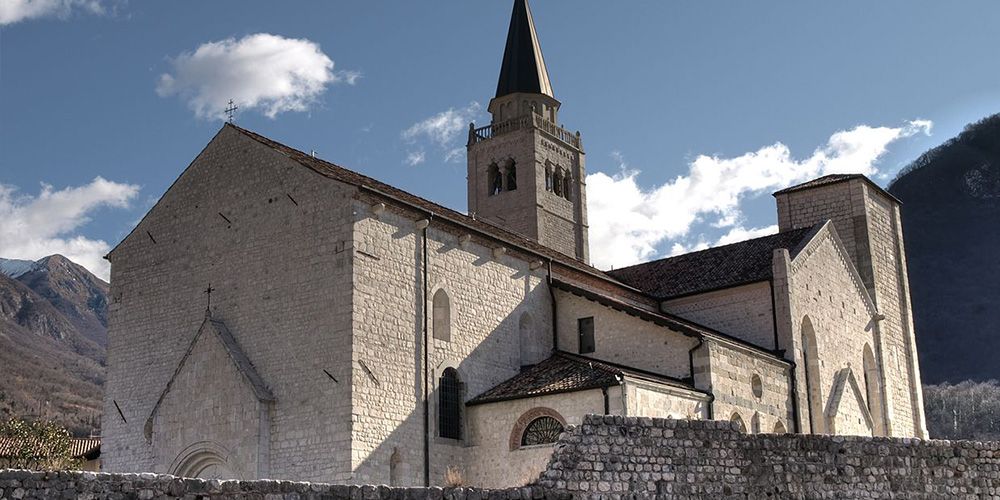
Venzone is a charming medieval town located in the Friuli Venezia Giulia region in north-eastern Italy. The town is famous for its beautiful historical centre, surrounded by imposing walls and towers, and its Venetian Gothic architecture.
One of Venzone's main attractions is the cathedral of Santa Maria Assunta, dating back to the 14th century and with a 66-meter high bell tower, which offers a spectacular view of the town and its surroundings. Venzone is also famous for its gastronomy, especially its cured meats, such as San Daniele ham and smoked bacon, and local wines such as Friulano and Ribolla Gialla.
In spring, the village comes alive with vibrant colors and floral scents, creating an enchanting atmosphere among its ancient streets and surrounding landscapes.
14. Palladian villas, immersed in Unesco World Heritage gardens of Veneto
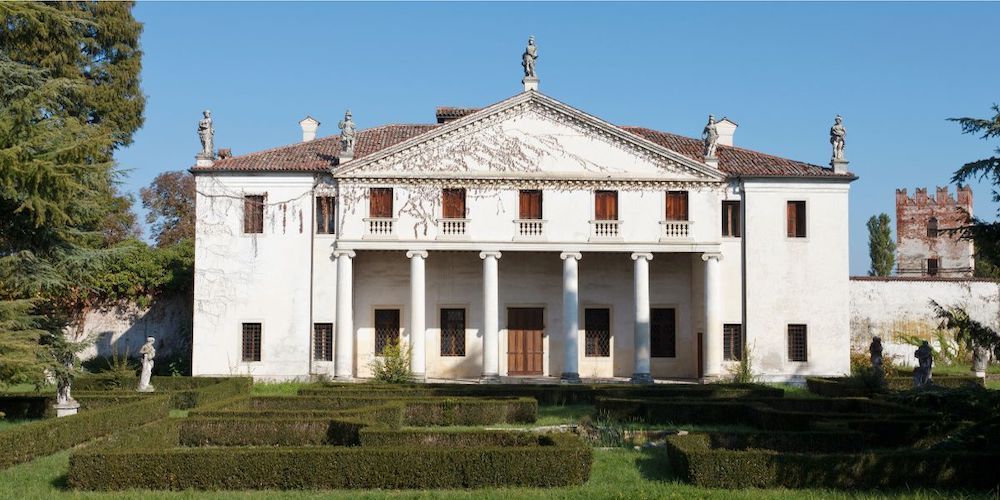
The perfect season to enjoy the wonderful gardens of the Palladian Villas in Veneto (UNESCO World Heritage Site since 1994) is definitely spring. A tour among the historic sixteenth century residences with their imposing neoclassical architecture is the best way to immerse yourself in the history of the area.
Among the villas not to be missed we have Villa Capra, called the Rotonda for its circular shape, Villa Angarano or Villa Pojana, with its striking frescoes. And also Villa Valmarana ai nani (so called because of the statues with which it is decorated), the villa-tempio Chiericati and Villa Porto Godi with its majestic garden.
The Palladian architecture (from the name of Andrea Palladio, architect creator of this kind of construction and of some of the most important residences) is distinguished by elegance and purity of form. The houses, places of leisure and entertainment of the nobles of the time, are all crowned by extensive gardens decorated with plants that create symmetrical patterns and various species of local flowers. Walking in springtime among these wonders takes you back in time, in the quiet of these places surrounded by nature.
13. Where to go in spring in Italy: Emilia Romagna among mosaics, towers and castles
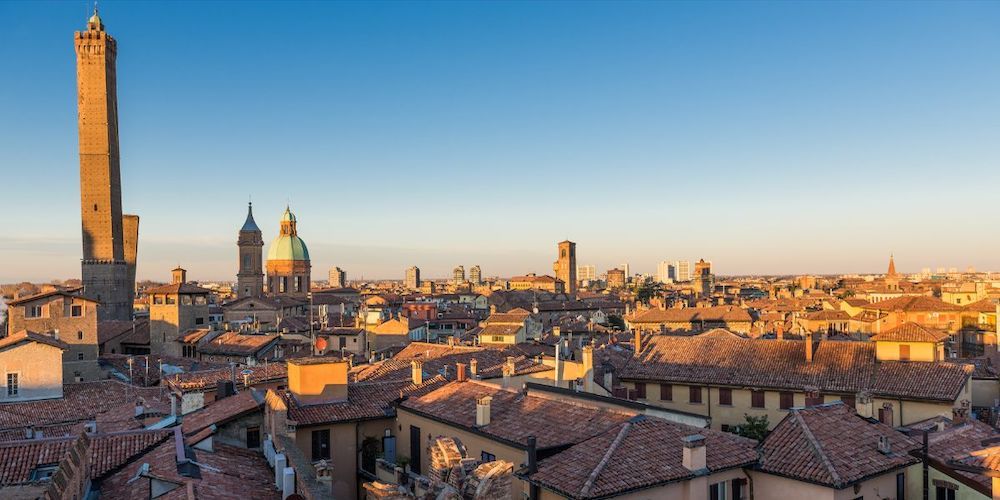
A spring travel idea suitable for art lovers is definitely a small tour among the historic cities of Ravenna, Bologna and Ferrara. The three centers of Emilia Romagna are more or less one hour away from each other by car, but they are also well connected by public transportation and easily reachable. This season is perfect to visit these famous cities of art, the mild climate is ideal for walking quietly among the streets and charming views of the typical brick architecture.
Ravenna, the ancient capital of the Western Roman Empire, still bears the traces of its important past: the Byzantine mosaics of the Basilica of San Vitale, the church of Sant'Apollinare Nuovo and Sant'Apollinare in Classe (located outside the city in the harbor area) and those of the Mausoleum of Galla Placidia are among the most beautiful works of art to be admired in the region.
If you want to get to the heart of Emilian architecture, it's impossible not to take a walk in the capital, Bologna, an extraordinary city offering numerous attractions: Piazza Maggiore and the Basilica of San Petronio, Piazza Santo Stefano, the Garisenda Tower, and the Asinelli Tower, from whose top you can enjoy a magical view of the city and the green Bolognese hills surrounding it.
Finally, Ferrara, with its famous Este Castle, symbol and main attraction of the city, offers visitors a full immersion in its past whose alleys are populated by arches and hidden courtyards. The city's cathedral and Palazzo dei Diamanti also deserve a thorough visit before relaxing with a delicious local dinner in one of the area's typical restaurants.
Join a guided walking tour in the heart of Bologna12. The Tuscan Archipelago National Park, a wonder to know
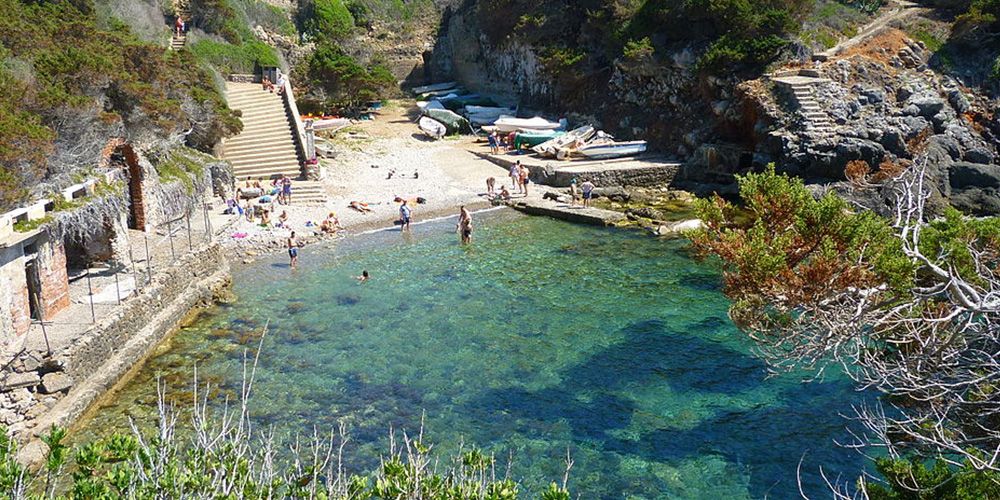
The Tuscan Archipelago is a collection of islands and reefs located in the Tyrrhenian Sea off the Tuscan coast in Italy. The archipelago comprises seven main islands: Elba Island, Giglio Island, Giannutri, Montecristo, Pianosa, Capraia, and Gorgona, and numerous smaller islets and rocks.
The Tuscan archipelago offers a variety of landscapes and activities: from white sandy beaches to rocky cliffs, from nature reserves to historic towns. The islands of the archipelago are also famous for their cuisine and local wines, including the famous white wine of Elba Island. The Tuscan archipelago is an ideal tourist destination for those who love nature, culture and good food, offering a wide range of activities to suit the tastes of all visitors.
11. The city of Urbino, art: culture, and the unspoiled nature of the Marche region
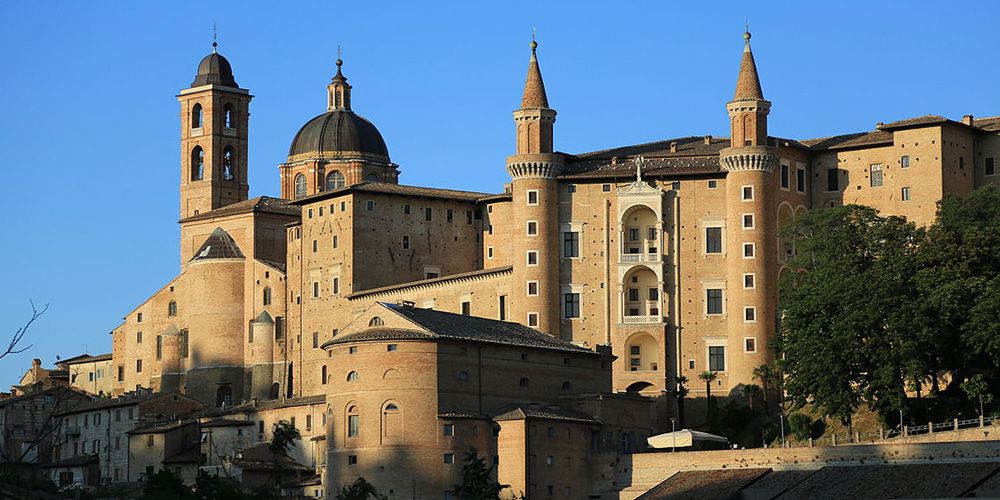
An ideal destination for those seeking a spring getaway blending nature and culture, Urbino is a city located in the Marche region, central Italy. Recognized as a UNESCO World Heritage Site, it boasts an outstanding old town filled with cobblestone streets, welcoming squares, and enchanting buildings such as the Palazzo Ducale, a magnificent example of Italian Renaissance architecture that now houses the National Gallery of the Marche.
The city is also the birthplace of the renowned Renaissance painter Raphael, whose artistic legacy is evident in numerous works and monuments, including his childhood home and the Cathedral of Santa Maria Assunta, a stunning 12th-century Romanesque church.
Urbino isn’t just about art and history: it’s a vibrant university town with a lively cultural scene, offering a variety of restaurants, bars, and shops that line its streets and squares. Surrounded by picturesque hills, it also offers breathtaking views of the beautiful Marche countryside.
10. The Marmore Waterfalls, an incredible excursion in the heart of Umbria
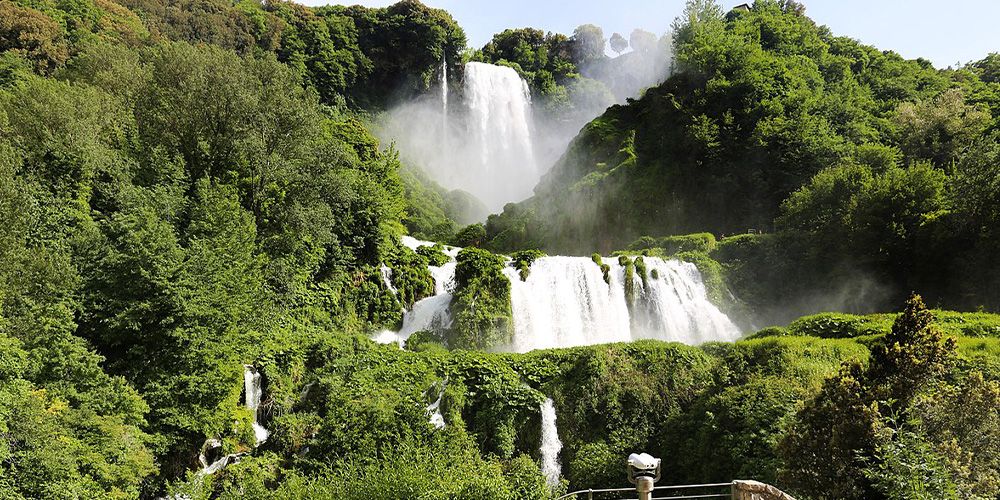
The Marmore Waterfalls are a unique marvel of Umbria, nestled in the unspoiled nature of Central Italy. With a drop of 165 meters, these waterfalls are among the highest in Europe and are one of the most visited tourist attractions in the region. The Marmore Falls were created by man in ancient times, when the Roman consul Marcus Curtius tried to divert the course of the river Velino to save the city of Rome from flooding.
The water of the waterfall falls in three separate levels, creating a magical and surreal atmosphere. The Marmore Falls also offer a wide range of activities, including rafting, hiking and cycling, and guided tours. In every season, especially in spring, the waterfalls and surrounding landscape offer a spectacle of extraordinary beauty, providing an unforgettable experience for nature lovers.
9. Park of the Roman Castles and Garden of Ninfa: spring walk in Lazio
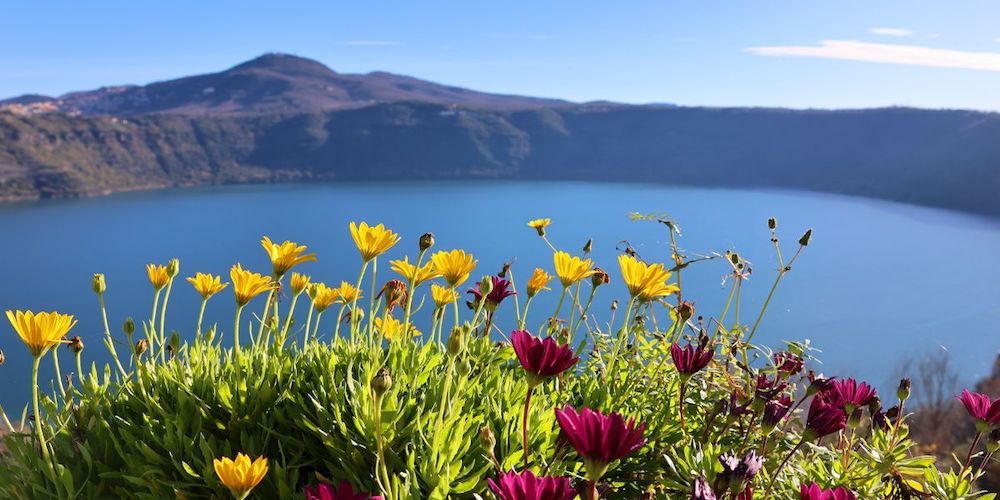
In the heart of Lazio, the Parco dei Castelli Romani enchants visitors with natural landscapes and historic villages.
Among the most renowned is Castel Gandolfo, the former summer residence of the popes, captivating with its gardens and the ruins of Emperor Domitian's villa. Ariccia is famous for its porchetta, while Nemi, overlooking its namesake lake, holds memories of Caligula's ships. Genzano di Roma stands out for the spectacular Infiorata, featuring a floral carpet of over 2,000 square meters. The lakes of Albano and Nemi complete this picturesque setting, perfect for a journey through nature and tradition.
Not far from the Castles, then, we can find the Garden of Ninfa, an ideal destination to fully enjoy the air and scents of spring. Declared a Natural Monument by the Lazio Region in 2000, this green space that rises along a picturesque river, has a very ancient history: the origin of the fortress, at the center of the garden, dates back to medieval times while in the sixteenth century Cardinal Nicolò III Caetani, a lover of botany, wanted to create in Ninfa a "garden of delights" and made a hortus conclusus, a garden bordered by walls with a regular plant, cultivating valuable varieties of citrus.
Admire the scenery of Lake Albano with a kayak tour8. The village of Santo Stefano di Sessanio, an enchanting medieval village in Abruzzo
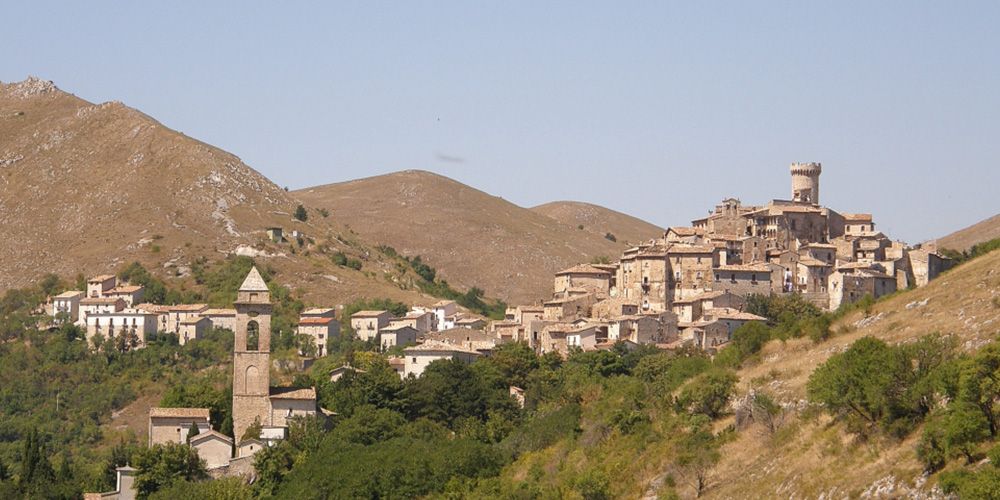
Santo Stefano di Sessanio is a charming medieval village located in the Abruzzo region of Italy. This ancient village is characterized by narrow streets, stone buildings and picturesque squares. Its historical architecture and privileged location at the foot of the Gran Sasso make Santo Stefano di Sessanio a popular tourist destination for those seeking an escape from urban life.
In the historic centre of the village are some of the best examples of medieval architecture in the region, including the 16th century Medicean Tower and the 14th century Church of San Lorenzo Martire. In addition, Santo Stefano di Sessanio is famous for its production of saffron, which has been cultivated in the region for centuries.
7. Where to go in spring in Italy: the charming Termoli on the Molise coast
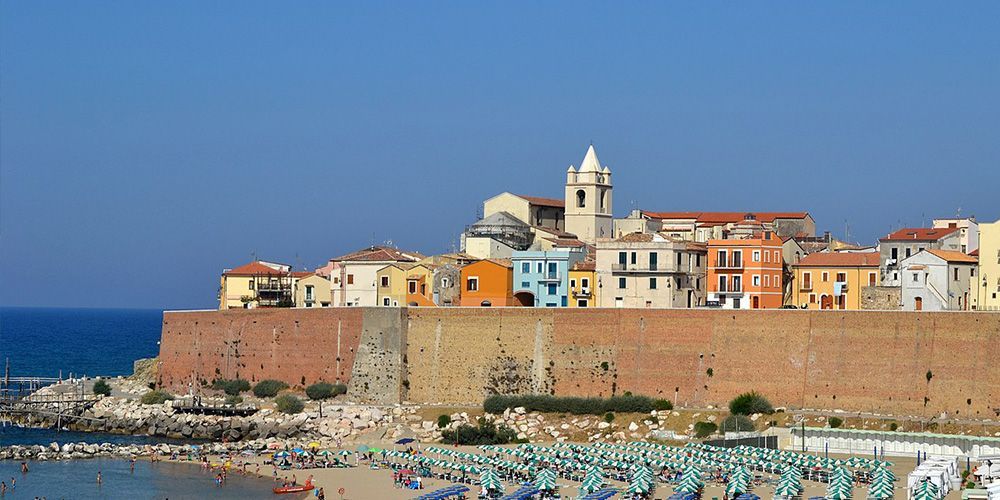
Termoli is a picturesque coastal town located in the Molise region in south-central Italy. The town overlooks the Adriatic Sea and offers beautiful beaches of golden sand and crystal-clear water, ideal for relaxing and sunbathing. The historical centre of Termoli, surrounded by ancient walls, is characterised by narrow streets, stone buildings and picturesque corners, such as the Swabian Castle, a medieval fortress dating back to the 11th century that dominates the town from above.
The historic centre is also home to the Cathedral of San Basso, a beautiful 12th-century Romanesque church, and the Museo Civico, which exhibits archaeological and historical artefacts related to the city's history. Termoli's gastronomic specialities include fresh fish dishes, such as brodetto alla termolese, a fish soup typical of the area. Visiting it in spring is something unique.
Discover the charm of the underground archaeological excavations of Termoli with an exclusive and captivating journey into the heart of local history.
Discover the secrets of Termoli underground6. The village of Sant'Agata de' Goti, a picturesque medieval village in Campania
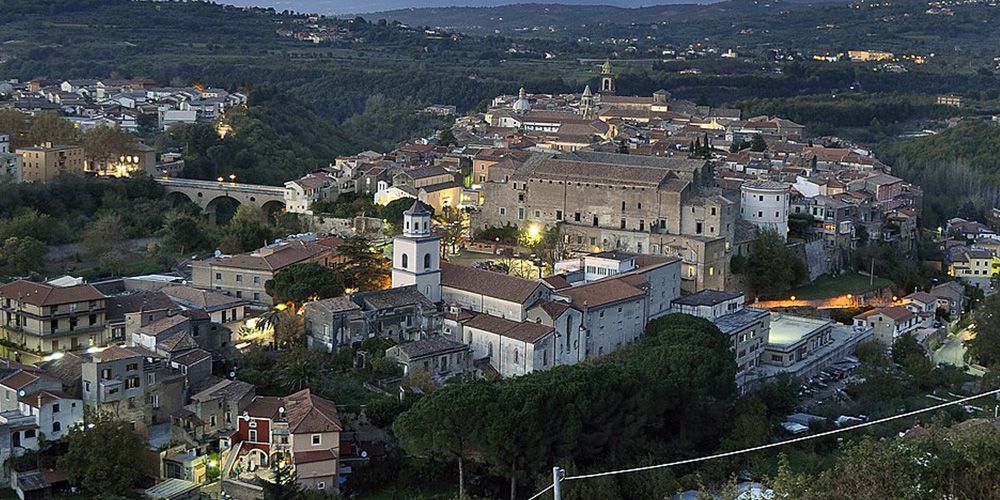
Sant'Agata dei Goti is a one of the most charming villages of Campania. Characterized by narrow alleys, stone arches, churches and historical buildings, this medieval village represents a hidden jewel of antiquity in southern Italy. Sant'Agata dei Goti is located about 40 kilometers north-east of Naples, on a hilltop overlooking the Isclero river valley.
The village is surrounded by well-preserved medieval walls, which testify to its ancient history. Some of the sights of Sant'Agata dei Goti include the 11th-century Romanesque cathedral, the bishop's palace and the Museo del Vino, which presents a collection of local wine bottles.
Did you know that Sant'Agata dei Goti is also famous for its cheese production? Among these is the highly prized goat's cheese 'Caciocavallo'. Moreover, the beauty and history of this village make it an ideal destination for lovers of history, art and culture, who wish to discover the beauty of lesser-known Italy, especially in spring.
5. Bisceglie, Trani, Barletta: spring in Apulia in the footsteps of Frederick II
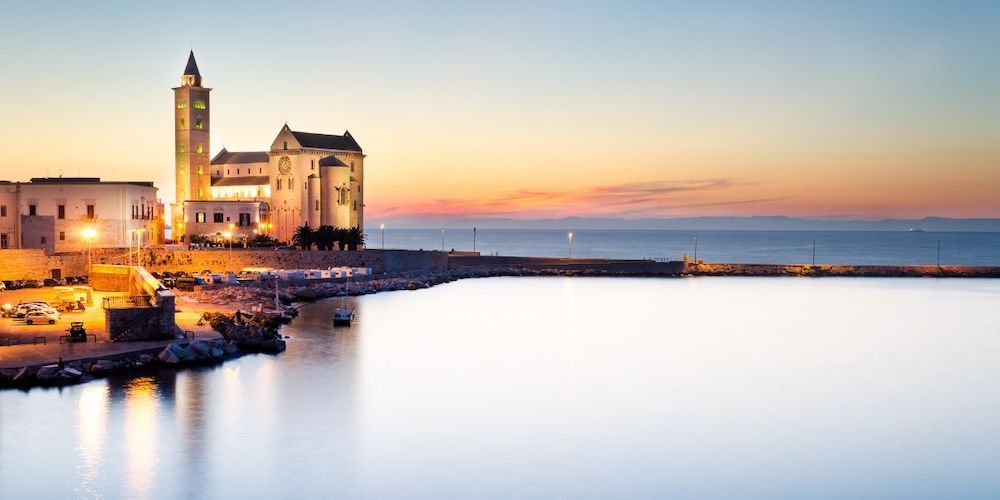
Lovers of the Middle Ages cannot miss a visit to these three wonderful cities in the North of Bari. In each of these cities, overlooking the Apulian sea, the footprints of the Norman Swabian past have left their mark in the churches and majestic castles. Spring is definitely the perfect time to visit these coastal cities, before the advent of summer tourism and the torrid heat typical of Southern Italy.
Bisceglie looks like a picturesque medieval center: churches, palaces, and monuments are shown in a maze of houses and alleys. Here stands the Cathedral of St. Peter, built in 1295 classic example of Apulian Romanesque.
Trani is also remembered for the splendid cathedral on the sea, the white of the typical stone stands out against the blue of the sea that envelops the old town, exalting the colors of the city port, one of the most experienced places in the city. Here you can taste the local seafood specialties and stroll among the picturesque boats.
Not far from Bisceglie and Trani, just beyond the city of Andria, stands the unmistakable silhouette of the famous Castel del Monte, a symbol of the medieval history of the region and ancient residence of Frederick II.
Lastly, Barletta has a huge castle near the sea which dominates the city and has gone down in history for its Colosso monument and the legendary 16th-century disfida. This historic challenge, which saw the victory over French knights, remains one of the most iconic moments in Italian chivalric history.
4. Spring in Basilicata: Matera, the city of the Sassi
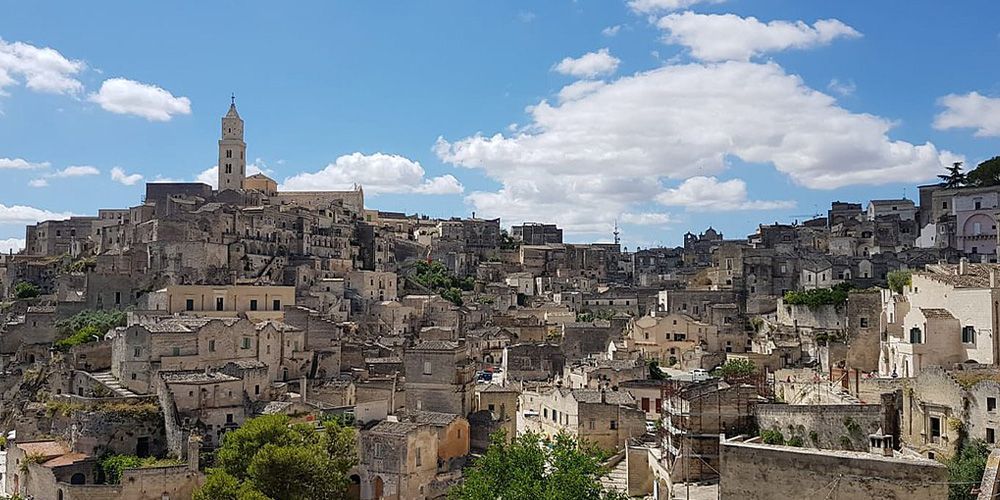
Matera is a city located in the Basilicata region of southern Italy. Known as the 'City of the Sassi', Matera is famous for its ancient quarters of houses carved out of the rock, called 'sassi', which have been inhabited since the Palaeolithic period. These quarters, located on a hill overlooking the Gravina river, represent one of the oldest and most impressive examples of rock architecture in the world.
Matera was named a UNESCO World Heritage Site in 1993 and has attracted international attention due to its beauty and millennial history. The city is also famous for its food and wine culture, with a wide range of traditional Lucanian dishes, including the famous Matera bread. Matera is an ideal tourist destination for those who love history, architecture and culture, offering a unique and unforgettable experience in the heart of southern Italy. It will amaze you in spring!
By purchasing the Matera Pass, you can admire the evocative sceneries of ancient Matera, rich in history and marvelous attractions.
3. Tropea beach, one of the most beautiful in Calabria

The beach of Tropea is one of the most famous seaside destinations in Calabria, located in the province of Vibo Valentia. Known as the 'Pearl of the Tyrrhenian Sea', this beach offers a breathtaking panoramic view of the crystal-clear sea and the rocky coastline. The beach is located at the foot of the historic centre of Tropea, a medieval village overlooking the sea, and is characterized by fine white sand and transparent waters.
The beach is about 2 kilometers long and offers numerous activities such as swimming, snorkeling, kayaking and paddle boarding. Tropea's natural beauty, combined with the city's rich history and culture, makes it a popular and fascinating tourist destination for those who wish to spend a relaxing holiday discovering the beauty of southern Italy. Visit it in spring, before the summer rush, you will not regret it.
2. The Alcantara Gorges, a true wonder of Sicilian nature
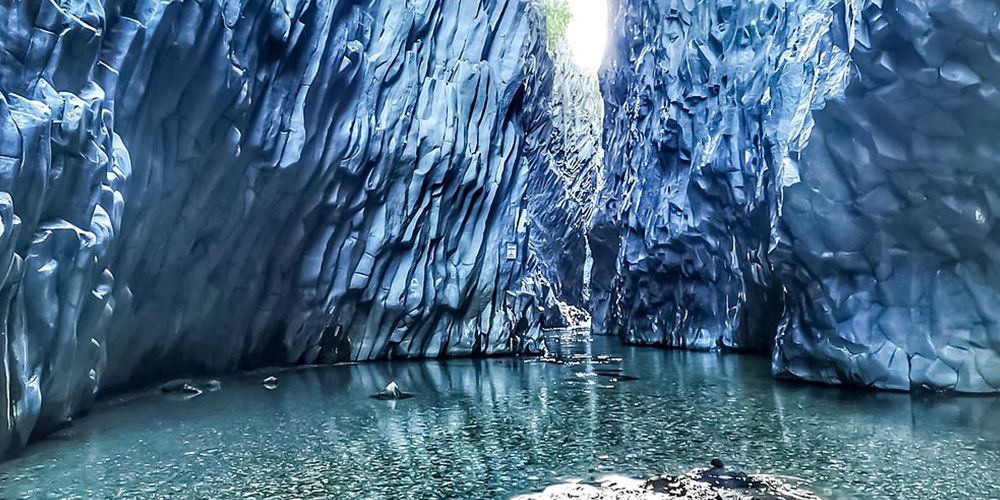
The Alcantara Gorges are a natural wonder located in the north-eastern part of Sicily, not far from Mount Etna. They were formed around 8,000 years ago when a volcanic eruption blocked the Alcantara river, causing it to deviate and carving a basalt canyon. The walls of the gorges, up to 50 meters high, show the characteristic striations of solidified lava.
The crystal-clear water of the Alcantara river flows between these walls, creating waterfalls and natural pools that are a popular tourist attraction. The Alcantara gorges offer breathtaking views and represent a perfect combination of nature and landscape, making them an ideal place to relax and enjoy the beauty of nature in spring.
Join a Mount Etna tour1. San Pietro Island, a hidden gem of Sardinia to discover in spring
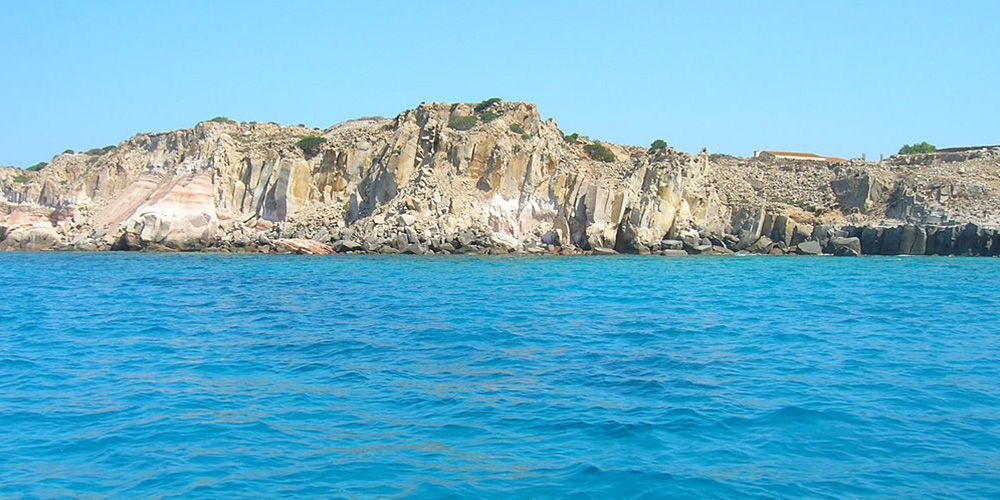
San Pietro Island is a truly enchanting destination located in the southwestern part of Sardinia. Best known for its pristine nature and stunning beaches, this captivating island remains a unique, unspoiled paradise, despite gaining more popularity year after year.
With its crystal-clear waters and the brilliant colors of the limestone rocks that surround it, San Pietro Island is an ideal destination for those who wish to spend time in contact with nature and enjoy the beauty of the sea. It also offers a wide range of activities such as trekking, fishing and boat trips, all in a peaceful and relaxing atmosphere that makes it a must-visit destination for anyone visiting Sardinia, especially in spring.
About the author
Written on 08/03/2023

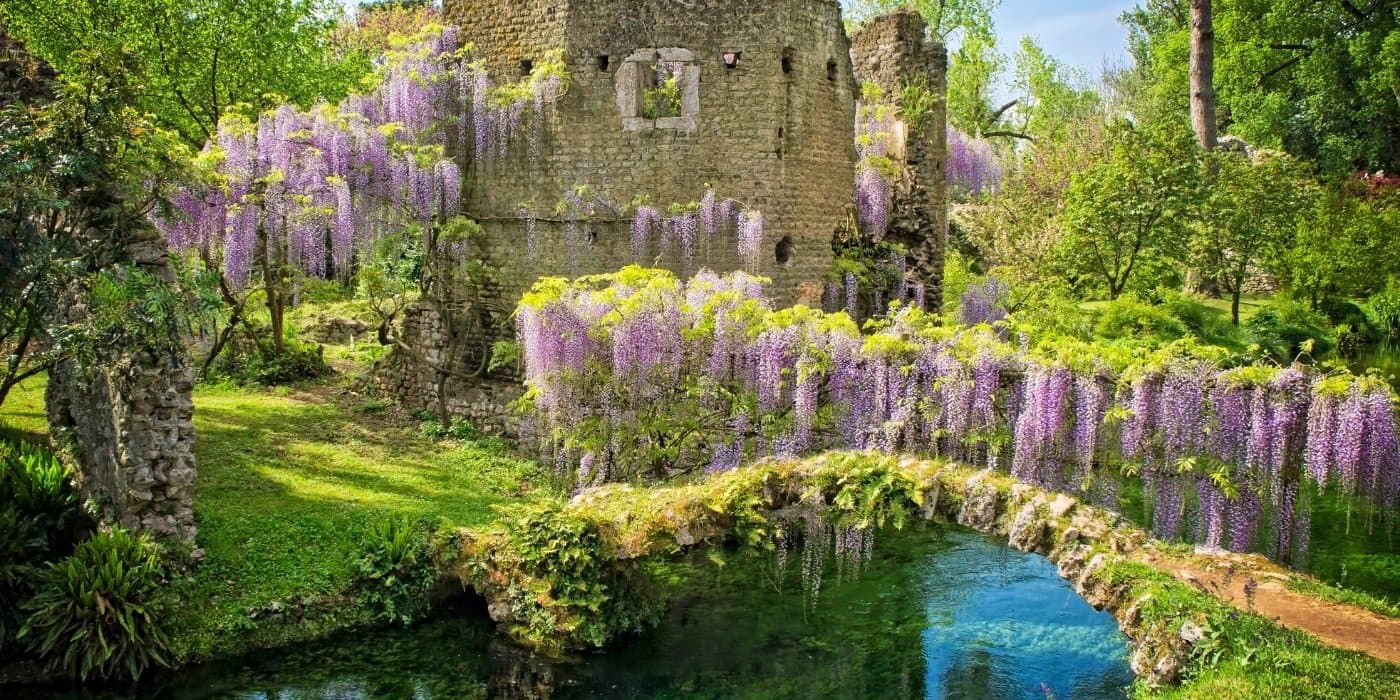

Emanuele Castellano
Where to go in Spring in Italy? From North to South, here are 20 travel ideas to enjoy it at its best.